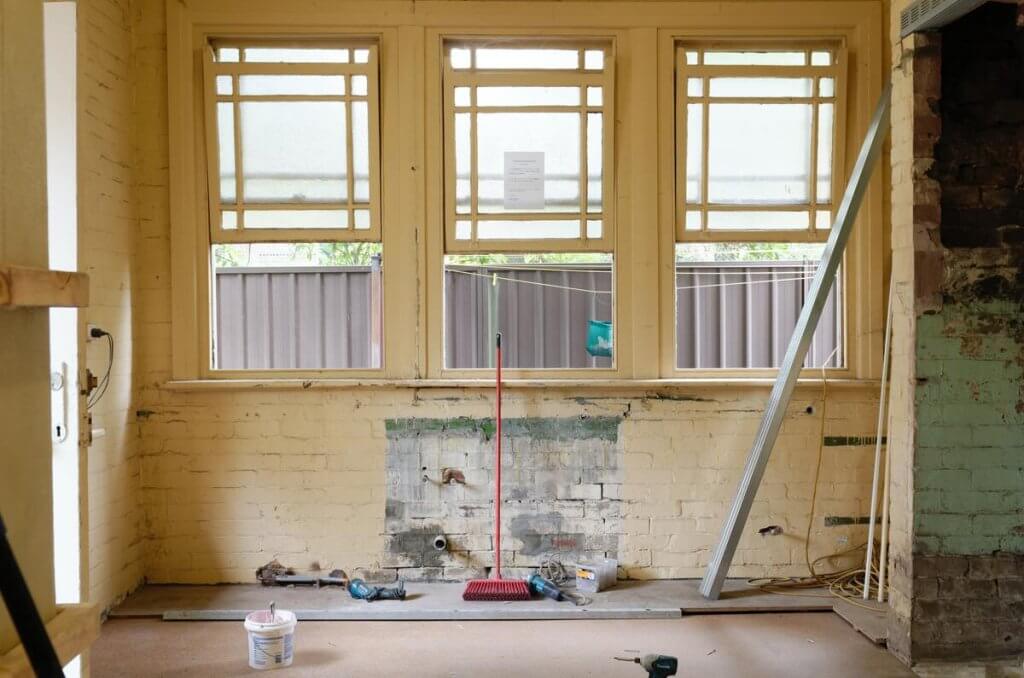How To Design A Home Renovation
Home renovation projects can be exciting and overwhelming. Planning a space that meets your functional and aesthetic goals requires careful planning and attention to detail—whether you’re looking to update a single room or overhaul your entire house.
In this article, we will guide you through the steps involved in designing your home renovation project, analyze the existing space, monitor progress during construction and evaluate a project’s success. Creating a personal space that you love and can enjoy for years to come is possible by following these steps.
Let’s dive in!
1. Evaluate the existing space
Consider what the existing space can offer, and decide how you would like to redesign it. Do you want to create a space for entertaining? Do you need a room that’s perfect for playing with your kids? Would you like to make your home office more efficient and comfortable? Consider the answers to these questions as well as any additional requirements or considerations.
2. Gather inspiration
Look at home renovation magazines, websites and social media platforms to get ideas of designs, colors and finishes that appeal to you. Collect pictures of these so they can form a mood board or design inspiration board. Take a walk around your neighborhood and look at houses that have been renovated. If there are any open houses on, take a peek inside to see how their renovations have turned out. Talk with friends and family members who have recently renovated their homes as well; these people may be able to give you some insights into what works best for them.
3. Develop a design concept:
Using your inspiration as a guide, develop a design concept that reflects your personal style and goals for the renovation. Consider factors such as the overall aesthetic, color palette, materials, and lighting. For example, if you’re trying to create a cozy and inviting space for your family, you might want to focus on warm colors such as reds, oranges and yellows. If you want the renovation to reflect your love of nature, consider incorporating natural materials such as wood or stone into your design.
4. Research the codes, ordinances, and regulations:
Research the local building codes, zoning ordinances, and regulations to ensure that your renovation project meets all legal requirements. If you don’t, you could end up with a home that’s not up to code—and it could be difficult or even impossible to sell in the future.
5. Consider sustainability:
When selecting materials and fixtures for your home, consider their environmental impact and energy efficiency to help reduce the overall carbon footprint of our planet.
Choose materials that are durable and long-lasting: When selecting materials, look for items that are made to last. They may cost more up-front, but they will save you money in the long run by requiring less maintenance.
Read Do You Need A Designer For Home Renovation
6. Hire a professional:
Depending on the scope of your project, you may need to hire an architect, interior designer, or contractor to help with the planning and execution. Consider hiring a professional if you are unsure which materials and fixtures to use, or if you want help with the planning and execution of your project. You can also hire a contractor to manage the work for you.
7. Create a design plan:
Using your design concept as a guide, create a detailed design plan that outlines all aspects of the renovation, including materials, finishes, lighting, and fixtures. Work with a professional designer if needed to ensure that the plan meets your needs and budget.
8. Refine the plan:
Once the initial design is completed, review it with your designer to make sure that you are both pleased with the results.
9. Select materials and finishes:
When selecting materials and finishes, consider their compatibility with your design plan, budget constraints, personal preferences/aesthetic tastes—and durability/maintenance requirements. Consider the following when choosing materials and finishes:
- The durability of materials, including whether they require maintenance (e.g., staining/waxing) or are easily damaged (e.g., scratches, stains).
- Their ability to withstand high humidity levels and weather conditions.
- How easy it is to clean them.
10. Incorporate lighting:
Lighting is an essential element of any design, and it is vital to incorporate it into your renovation plan. Natural light, artificial lighting—such as chandeliers or spotlights—and accent lights can all be used to create a comfortable and inviting space.
When deciding on the type of lighting you want in your bathroom, consider these factors: -Natural light: The amount of natural light that comes through your windows will depend on their size and location (e.g., facing north or south). If there is not enough natural light entering your bathroom, consider adding skylights or using artificial lighting sources.
11. Create a 3D model:
Use design software to create a 3D model of the renovated space so that you can visualize your plan before construction begins and make any necessary adjustments. This will also help you to determine if there are any features in your plan that may be challenging to implement, such as plumbing or electrical needs.
12. Communicate with contractors:
Communicate the design plan and any changes to the contractor and construction team to ensure that they understand the design goals and can execute the plan accurately. This will help to avoid any confusion or delays in the construction process and ensure that your project is completed on time.
13. Monitor progress:
Regularly monitor the progress of the renovation to ensure that it meets your design goals and remains within budget. This will help to ensure that your renovation meets the design goals and remains within budget. Finalize details: Once construction is complete, review the final plans with your contractor and make any adjustments or changes.
Conclusion
Designing your home renovation project can be a challenging yet rewarding experience. By following a step-by-step approach to designing and planning, you can create a living space that reflects your personal style.
Remember to evaluate the existing space, gather inspiration, develop a design concept, create a detailed plan, refine the plan, select materials and finishes, incorporate lighting, create a 3D model, communicate with contractors, and monitor progress. By taking the time to carefully plan and execute your home renovation project, you can transform your space into the home of your dreams. Good luck with your project!

